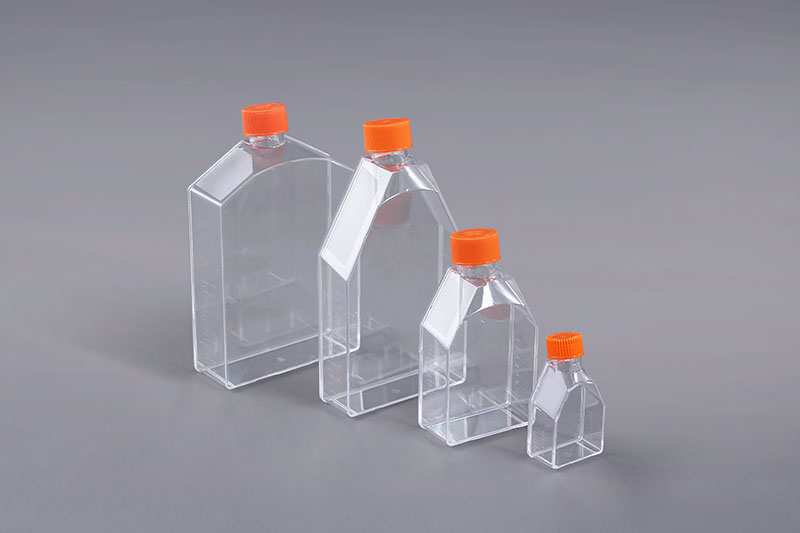Cell passage refers to the process of dividing the culture into small parts, re-seeding in another culture vessel, and then culturing. Cell culture flasks are a common consumable in the process of passaging, so what are the specific steps of cell passaging?
1. Take out the cell culture flasks from the incubator, spray 75% alcohol on the surface of the bottle with an alcohol spray can, and transfer it to the ultra-clean table.
2. Open the lid, gently aspirate the old culture medium, add an appropriate amount of PBS buffer to wash 1-2 times with a Pasteur pipette, and discard the PBS buffer.
3. Use a pipette to add 1-2ml of pancreatin and shake the "cross" to make pancreatin fully contact the cells.
4. Transfer the cell culture flask with trypsin to the inverted microscope stage and observe the cell digestion under the microscope. When the cells become round and fall off in large quantities, prepare to terminate the digestion. Spray the surface of the bottle with 75% alcohol and transfer it to the super Net Taiwan.
5. Use a pipette (or Pasteur pipette) to add an equal amount of serum-containing medium to terminate the digestion. Pipette thoroughly to allow the cells to fall off completely.
6. Transfer the mixed liquid in the bottle to a centrifuge tube, balance it, and centrifuge for about 5 minutes.
7. After centrifugation, spray the surface of the centrifuge tube with an alcohol spray can, transfer it to the ultra-clean table, open the lid, and pour the supernatant into the waste tank.
8. Add an appropriate volume of serum-containing medium and gently pipette with a pipette or Pasteur pipette to make a cell suspension.
9. Divide the cell suspension into 2 (or more) clean sterile culture flasks, add appropriate amount of culture medium, and close the lid.
10. Place the aliquoted culture flask on the stage of the inverted microscope and observe the cell condition. The number of cells should be guaranteed. Too small number will affect the growth.
11. Mark the bottle to indicate the passage time, cell type, operator and other information. Before putting it in the incubator, spray the surface of the bottle body with alcohol again, clean up the operating table, wipe the surface of the ultra-clean table with 75% alcohol, and clean up waste liquid and garbage.
The above is the specific process of using cell culture flasks for cell passaging. Note that you should wear sterile clothes, sterile gloves and masks during operation, and pay attention to aseptic operations throughout the process to avoid cell contamination.
The FAI climbed 5.9 percent year-on-year in the first 11 months of 2018, quickening from the 5.7-percent growth in Jan-Oct, the National Bureau of Statistics (NBS) said Friday in an online statement.
The key indicator of investment, dubbed a major growth driver, hit the bottom in August and has since started to rebound steadily.
In the face of emerging economic challenges home and abroad, China has stepped up efforts to stabilize investment, in particular rolling out measures to motivate private investors and channel funds into infrastructure.
Friday's data showed private investment, accounting for more than 60 percent of the total FAI, expanded by a brisk 8.7 percent.
NBS spokesperson Mao Shengyong said funds into weak economic links registered rapid increases as investment in environmental protection and agriculture jumped 42 percent and 12.5 percent respectively, much faster than the average.
In breakdown, investment in high-tech and equipment manufacturing remained vigorous with 16.1-percent and 11.6-percent increases respectively in the first 11 months. Infrastructure investment gained 3.7 percent, staying flat. Investment in property development rose 9.7 percent, also unchanged.
 English
English



















































